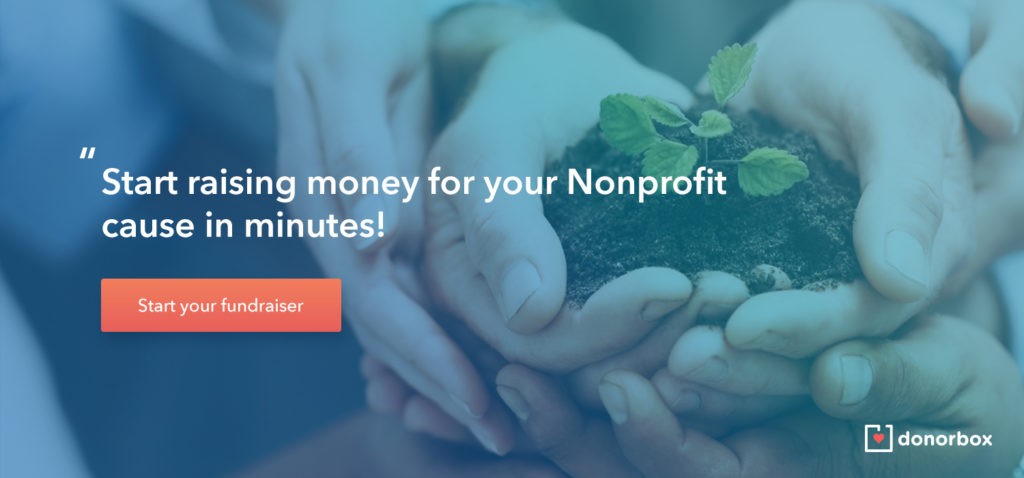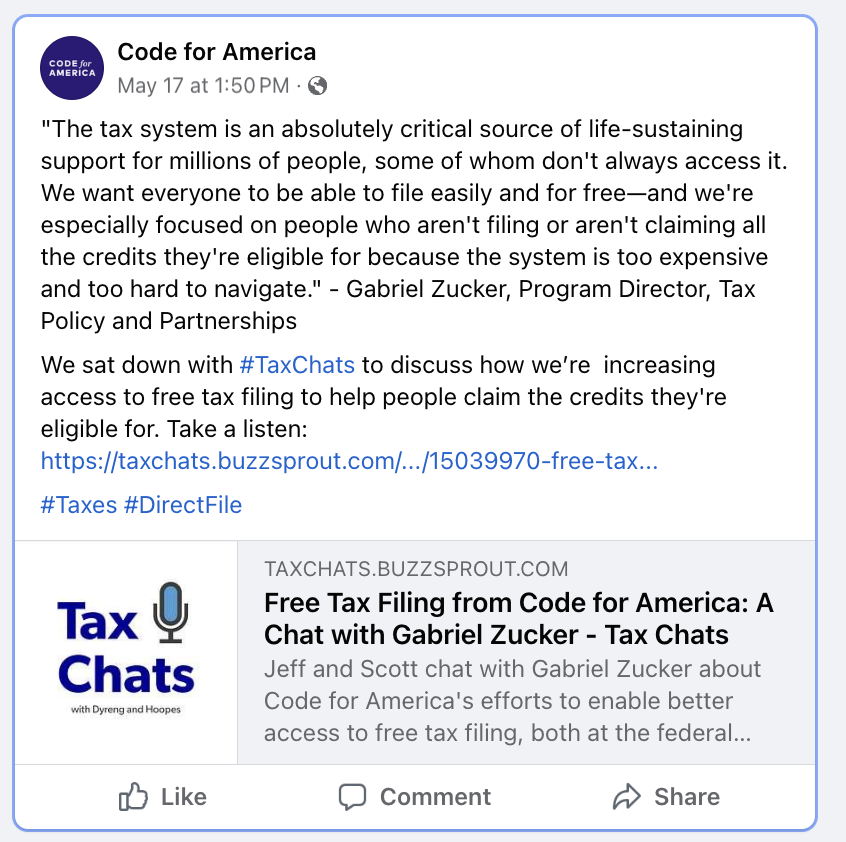It’s not a secret that if a nonprofit wants to be successful in today’s fast-changing and complex world, it has to be present and active on social media networks. And the most prominent social media platform, without a doubt, is Facebook.
Facebook receives 11.2 billion visits a year, making it the third most popular website.
Although Facebook has been around for a while, that doesn’t make it any easier. Facebook’s algorithm is constantly changing and evolving. For example, in 2023 Facebook significantly changed their fundraising offerings and now only partner with the PayPal Giving Fund. Learn more about these changes in this blog.
These changes, coupled with increasingly fierce competition and crowded space in which everyone is vying for attention, can make it difficult for a nonprofit to stand out on Facebook. It can feel like shouting into the void – especially with organic reach and engagement constantly dwindling.
To help you maximize the reach and engagement of your Facebook posts, we’ve compiled a list of ways in which you can get the most out of Facebook.
Facebook for Nonprofits – 10 Tips and Best Practices
1. Have a Facebook Marketing Strategy

In an ideal world, what would your Facebook engagement look like? What is your goal for Facebook – to spread awareness about your mission or to get more donations?
Answering these questions will help you kick off your Facebook marketing strategy
Once you’ve answered those questions – think about how your Facebook account fits in with the rest of your organization and marketing strategy, and how it fits with your other social media accounts like Instagram or YouTube.
Brainstorm with your team and note down:
- Who will run your nonprofit Facebook account? Building your presence on Facebook requires careful stewardship and attention.
- Who are you trying to reach? What’s your audience like? What are their passions and interests? This might look similar to your ideal donor persona.
- What are you trying to say and share? What’s your core message(s)?
- Set specific and measurable goals for your Facebook account (e.g. number of likes, shares, or a specific click-through rate).
- How will you keep track of your progress and your Key Performance Indicators?
Once you have a strategy in place for your Facebook activities, you’ll have a better chance of succeeding.
2. Keep Your Profile Current
Your Facebook profile represents your organization. It’s vital that your profile is complete with a profile picture, cover photo, description, and contact information.
Here is what you can do:
- Make sure you are using a Facebook page for your nonprofit. It is against Facebook guidelines for any organization to use a personal profile. If you want to fundraise, you’ll need a Meta for Business account.
- Use your organization’s logo as your profile picture. Use a high-quality image that will fit neatly into the allotted space.
- Complete the “About” section. Google grabs content from your About section, so make sure you have completed all fields. Most important are your web address, physical address, contact information, and keyword-rich description.
3. Become a Content Guru
If you want to grow in today’s social media space, it’s no longer enough to just post randomly or use Facebook as a one-way advertising space.
To get the most out of Facebook and make it an invaluable fundraising tool, post high-quality, relevant, and compelling content that interests your target audience. And post regularly to build momentum.
But remember – never value quantity over quality.
– Change up your post types. Not every post should be an appeal for donations. Post videos, images, and updates about your work to keep your audience engaged.
– Don’t be afraid to ask your audience what they would like to see from your nonprofit. You can gather this information in person, via an email survey, or by asking them on social media.
– Ask for engagement. Don’t be afraid to post things like “Like if…” or “Fill in the blank. I volunteer because…”. Simple additions like these can increase your reach and engagement.
– Post a couple of times per day depending on how large your following is.
– Visual content is key. This includes:
- Photos
- GIFs
- Quote images
- Short videos (30-45 seconds, with captions as 85% of Facebook users play videos without sound)
- Infographics
- Memes
– Use the 70/20/10 rule. This is recommended by many experts in the social media engagement field.
- 70% Value Content: The majority of Facebook content should add value to your community. Post content that is interesting, informative, entertaining, or inspiring. This content should ideally be created by you.
- 20% Shared Content: Sharing other people’s ideas or Facebook posts. This could even be content generated by your followers.
- 10% Promotional Content: Promoting your programs, events, fundraising campaign, blog, or anything that’s predominantly promotional in nature.
– Optimize for mobile. With the majority of social media usage taking place on mobile devices, you need to ensure that you optimize your online content for mobile viewing.

4. Share Link Posts Instead of Photos
Facebook found that people prefer to click on links that are displayed in the link format which appears when you paste a link while drafting a post (see the image below), rather than links that appear in photo captions.
These posts have received twice as many clicks compared to links embedded in the photo caption.
It is believed that this is because the link format shows some additional information associated with the link, such as the beginning of the article, which makes it easier for someone to decide if they want to click through.
This format also makes it easier for someone to click through on mobile devices, which have a smaller screen.
We love how Code for America included a compelling quote from their podcast, along with a link, to encourage clicking through.

5. It’s All About Video
With the rise of TikTok and Reels on Facebook and Instagram, short, casual videos have taken over social media. Videos are great at succinctly sharing information while more vividly connecting with your audience’s emotions.
Here are some Facebook video tips:
- Upload your video content directly to Facebook. You’ll have a much higher chance of your video being seen by your community than when linked out.
- Facebook videos play automatically on users’ timelines but do not play the audio until the user chooses to activate it. This is why it’s important to use compelling visuals that will capture enough interest, even without the sound. This is the same reason why it’s important to caption your videos.
- Keep your videos short and effective. Videos that are too long get ignored or don’t get finished by the audience.
- Deliver your Facebook videos in a square format. It’s important to format video to be more accommodating for viewers on mobile devices.
- Make sure your video has a descriptive, compelling title so that can easily be found by users.
6. Make Social Engagement Your Priority
Investing time and other resources in creating and sharing great content is incredibly important, as is measuring and evaluating progress and results.
What’s even more important is the social engagement with your supporters on Facebook.
This can involve:
- Responding to questions
- Answering direct messages
- Responding to comments and posts tagging your organization
- Looking for relevant hashtags to find new conversations to join
- Reaching out to supporters individually to show the personality of your organization
- Sharing behind-the-scenes content from the field or the office
This will also humanize your nonprofit and is an excellent opportunity to create your own voice and brand identity. It helps you build trust with your audience, create momentum, and show that you ppreciate everyone interested in your work.
7. Measure, Evaluate, Decide

It’s essential that your nonprofit, during the strategy creation process, decide what success means to your organization and how exactly you’re going to measure it.
Select a couple of Key Performance Indicators (KPIs). Typically, KPIs for Facebook include the following categories:
- Awareness — Impressions, Views, Reach
- Growth — Followers, Likes, Subscribers
- Engagement — Reactions, Clicks, Comments, Shares
- Conversions — Event Registrations, Donations
Measuring your KPIs will allow you to evaluate the progress toward your goals and decide on an appropriate course of action.
Pro tip: Download our free Rose, Bud, and Thorn worksheet to evaluate your social media progress.
8. Experiment with Facebook Ads
Although not free, Facebook Ads can be a great way to boost your presence and increase your nonprofit’s visibility on Facebook.
You can either “boost” a post or create a Facebook ad. Boosting is a form of Facebook advertising that makes it easy to put a little bit of money behind a Facebook post and help it show up in more news feeds. This is the simplest way to advertise on Facebook.
Boosted posts don’t have all of the same customization features as Facebook ads. To create an ad campaign, you’ll usually start from scratch in Meta Business Manager, and the process is a little bit more complicated.
Before clicking a “Boost Post” button or creating a generic Facebook Ad, think about what you hope to accomplish. Running advertising campaigns without a goal or a plan is like throwing money away.
What exactly are you hoping to accomplish with the campaign – increase donations, increase blog views, get email newsletter sign-ups.? Your CTA (Call to Action) should be crystal clear and directly related to your nonprofit goals.
Set a budget and then track the performance of the boosted post or the ad.
Pro tip: Only promote your best. Choose content that evoked emotion, created a discussion or received a few shares. Choose your wording and your images very carefully. Use graphics and language that have worked in the past.
9. Use Facebook’s Fundraising Tools
Facebook used to be one of the best places for nonprofits to fundraise. And it can still be a great source of contributed revenue, but it’s important to understand how Facebook’s fundraising tools work.
If you’re in the U.S., U.K., or Australia, all donations made to your cause on Facebook are handled by PayPal Giving Fund. This means that you need to create a PayPal business account to enroll in giving. Learn more about the requirements and how to enroll here.
Once enrolled, you can receive donations from your top supporters. Plus, your supporters can launch fundraisers on your behalf to raise even more!
While Facebook shouldn’t be your primary fundraising platform, it can help you collect extra funds through supporter-led fundraisers. You can also link to your external fundraising platform or donation page to easily collect more donations from your Facebook audience.
10. Join Nonprofit Facebook Groups
Especially with the changes made to the Facebook algorithm to show users more content from people and groups they care about, and less from Pages, Facebook groups can become a very helpful tool for your nonprofit.
Facebook groups are a valuable place to generate discussion and nurture a sense of community amongst volunteers, workers, donors, and members of the community who are invested in your cause.
You have three options when creating a Facebook group: open, closed, and secret. Which one you’ll choose will depend very much on your nonprofit. Keeping a group closed might be the best option for the majority of nonprofits because they can be found by anyone, but require admin approval to enter and won’t let non-members see any of the content.
Even though it can be time-consuming to manage a Facebook group, it is definitely an excellent platform for discussion and community building.
Here are our top Facebook Groups tips:
- Promote your recurring giving program in the group. However, be mindful of the balance between promoting posts and valuable content. If you’re too spammy with the promotions, your group members might decide to leave the group.
- Learn from other nonprofits. Join other nonprofit-related Facebook groups and ask for tips from them. Also take time to build partnerships and relationships by having conversations, resharing, co-promoting, and more.
- Engage with users. This is how you build trust, loyalty, and engagement. And this is what will eventually drive the group members to donate and contribute to your nonprofit.
- Share stories of impact. Show clearly where the donations are going.
Conclusion
These are some of the most essential Facebook tips and best practices for your nonprofit. Don’t forget to keep up with your posting, as well as with tracking post times to discover which days and times reach most of your audience. Don’t forget to get creative with your Facebook strategy.
Take the time to look at and understand your Facebook analytics and put the work in to make your content valuable and professional. Always prioritize your supporters and your donors.
As a nonprofit professional, your goal is to help your nonprofit get closer to its mission. And social media networks, particularly Facebook, can be great tools to do that. Facebook has a massive potential to propel you forward – if done right.
Facebook campaigns can really work alongside your fundraising software as part of a holistic strategy that helps you achieve your goals. Donorbox offers comprehensive fundraising features that help you raise more both online and in person. Sign up today and start fundraising in under 15 minutes!
Check out our Nonprofit blog for more nonprofit resources and tips. Subscribe to our newsletter to receive the best of the blog delivered in your inbox every month.








